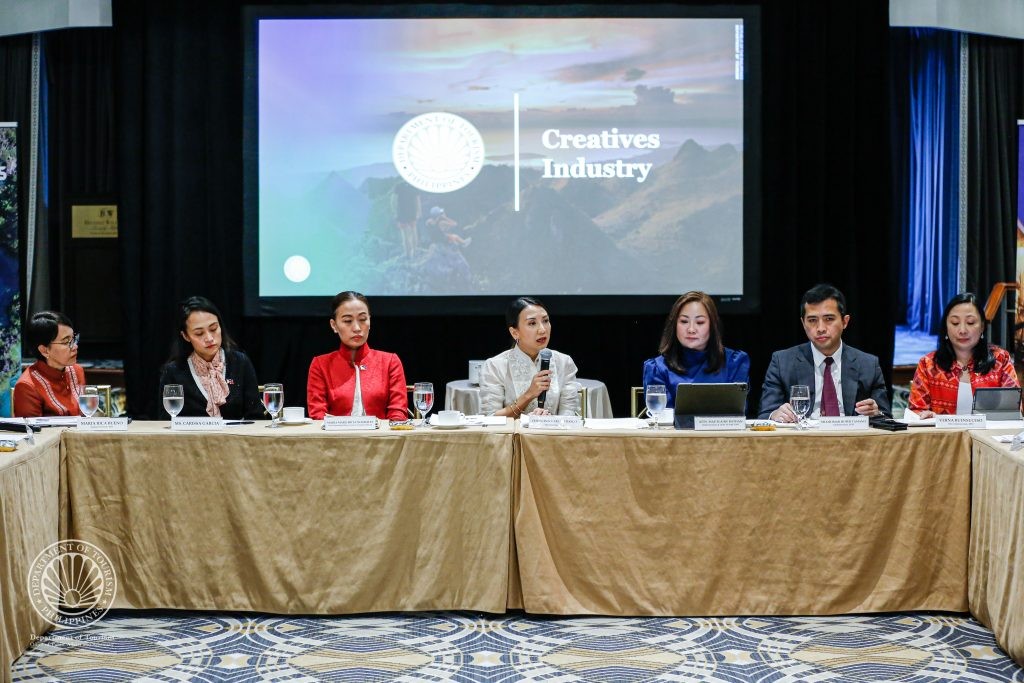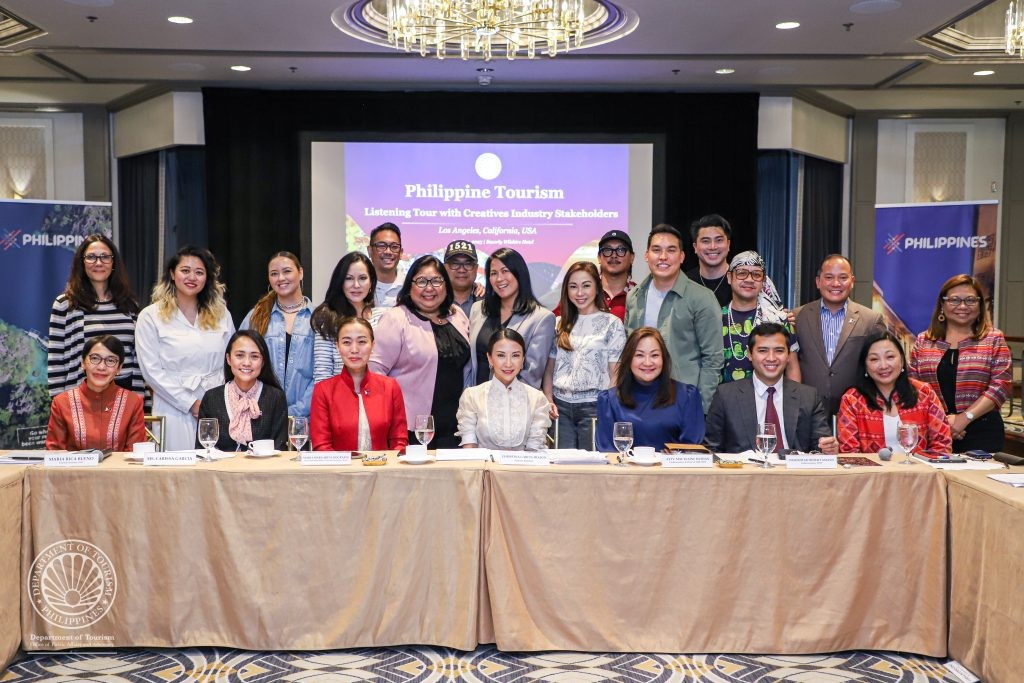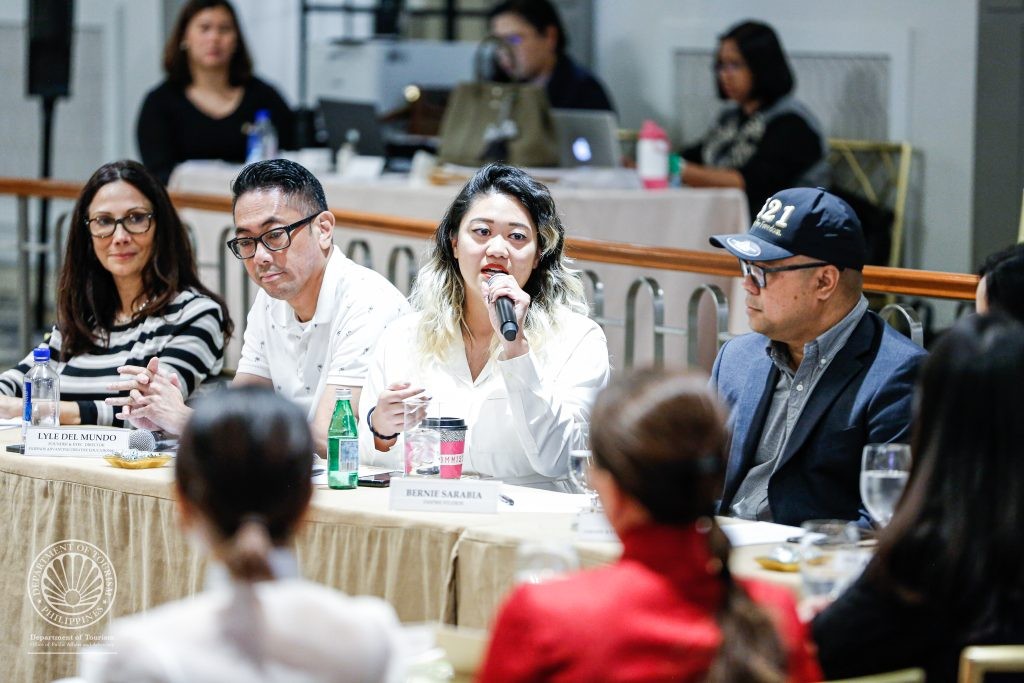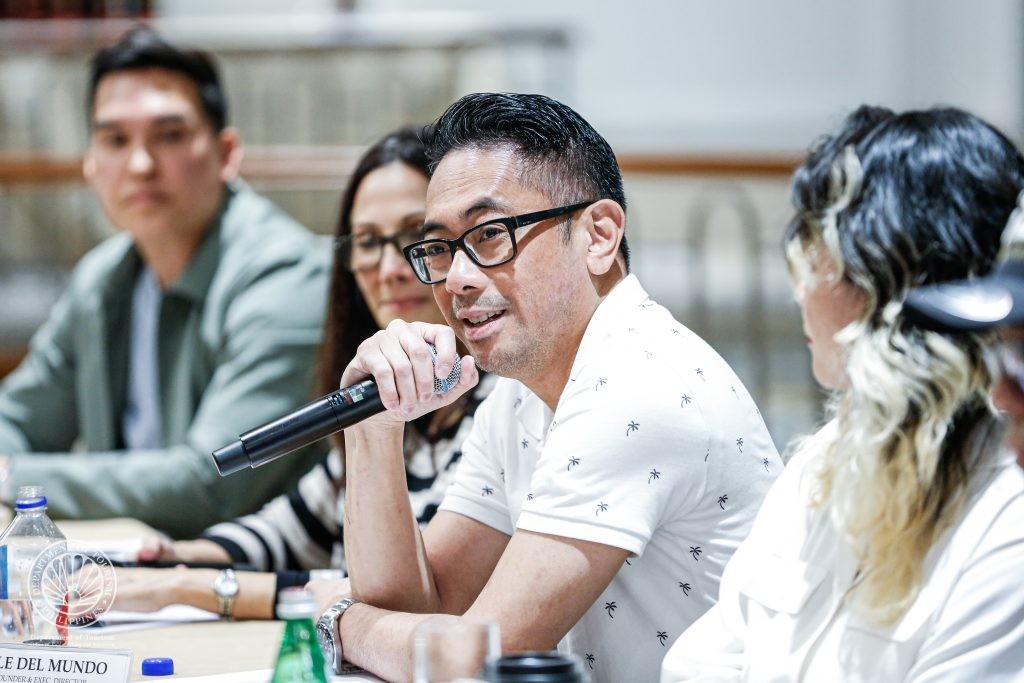Are you curious about How Will You Promote Philippine Tourism to attract more visitors and showcase the beauty of this Southeast Asian nation? SIXT.VN is here to provide some strategic insights and innovative ideas. We will explore various avenues, from leveraging digital marketing to focusing on sustainable and cultural tourism, ensuring the Philippines becomes a top-of-mind destination for travelers worldwide. Discover the latest strategies to enhance the Philippine travel experience and boost the country’s tourism sector.
1. What is Film Tourism and How Can It Boost Philippine Tourism?
Film tourism is a specialized form of tourism where people visit locations that have become famous due to their appearance in movies, TV shows, or other visual media. By actively promoting the Philippines as a filming location and highlighting its appearances in international productions, the country can attract a new wave of tourists eager to experience these iconic sites firsthand. According to research from the Film Development Council of the Philippines (FDCP) in 2023, film tourism can significantly boost local economies and promote cultural heritage.
1.1. How Can the Philippines Attract Filmmakers?
To attract filmmakers, the Philippines can:
- Offer Filming Incentives: The Film Development Council of the Philippines (FDCP) offers filming incentives through its Film Philippines Office. These incentives can include tax breaks, subsidies, and logistical support to make filming in the Philippines more attractive and cost-effective.
- Highlight Ease of Doing Business: Emphasize that English is widely spoken and read, facilitating communication. This ease of communication can significantly streamline production processes.
- Showcase Talent: Promote the availability of skilled local talent in pre-production, production, and post-production. According to the Department of Tourism (DOT), a skilled workforce can reduce production costs and improve the quality of the final product.
- Promote Unique Locations: With over 7,641 islands, each offering unique landscapes and cultural stories, the Philippines provides diverse and captivating filming locations.
1.2. What are Some Examples of Movies and Series Shot in the Philippines?
Several international productions have utilized the Philippines as a filming location, including:
- Almost Paradise: The first American television series filmed entirely in the Philippines, specifically in Cebu.
- Pekin Express: A French version of the Amazing Race that showcased various scenic spots.
- Million Dollar Island: A Dutch reality show filmed in Palawan, highlighting the island’s natural beauty.
- Survivors Series: Multiple seasons featuring Caramoan Island and Busuanga for their remote and exotic landscapes.
- The Bourne Legacy: Scenes featuring the big lagoon of El Nido in Palawan and the streets of Manila, increasing visibility on a global scale.
- Born on the 4th of July: Shot in the La Paz Sand Dunes in Laoag, Ilocos Norte, and Vigan in Ilocos Sur, emphasizing the country’s diverse landscapes.
1.3. What are the Benefits of Attracting Film Productions?
Attracting film productions offers several benefits:
- Economic Boost: Film productions bring significant investment, creating jobs and stimulating local economies, according to the Tourism Promotions Board (TPB).
- Tourism Promotion: Films showcase the country’s islands and cultural treasures, enticing viewers to visit the locations.
- Cultural Exchange: Encouraging international filmmakers promotes the Filipino story and fosters cultural exchange, enriching the media and entertainment landscape.
- Global Visibility: Films shot in the Philippines gain international exposure, positioning the country as a viable destination for both tourism and media production.
2. Why is Sustainable Tourism Important for Promoting Philippine Destinations?
Sustainable tourism is crucial for the Philippines because it ensures that the tourism industry does not harm the natural and cultural resources that attract visitors in the first place. The Philippines, with its rich biodiversity and unique ecosystems, benefits significantly from tourism practices that prioritize conservation and community well-being. According to the United Nations Environment Programme (UNEP), sustainable tourism helps protect the environment, supports local communities, and preserves cultural heritage.
2.1. What are Eco-Friendly Tourist Rest Areas?
Eco-friendly tourist rest areas are facilities designed to minimize environmental impact while providing essential services to tourists. These rest areas often include features such as:
- Renewable Energy Sources: Solar panels or wind turbines to generate electricity.
- Water Conservation Systems: Rainwater harvesting and efficient water fixtures.
- Waste Management Programs: Recycling and composting facilities to reduce waste.
- Sustainable Building Materials: Locally sourced, eco-friendly materials for construction.
The Department of Tourism (DOT) is actively promoting the construction of eco-friendly tourist rest areas across the Philippines. These areas provide a comfortable and sustainable environment for travelers, encouraging responsible tourism practices.
2.2. How Does UNESCO Recognition Contribute to Sustainable Tourism?
UNESCO recognition, such as declaring a site a Biosphere Reserve or World Heritage Site, significantly enhances a destination’s appeal and promotes sustainable tourism. These designations ensure that sites are managed in a way that preserves their natural and cultural value for future generations. According to UNESCO, these sites often become magnets for environmentally conscious travelers, boosting local economies while protecting valuable resources.
2.3. What Role Does the Local Community Play in Sustainable Tourism?
Local communities are integral to the success of sustainable tourism initiatives. Their involvement ensures that tourism benefits them directly and respects their cultural heritage. Strategies include:
- Community-Based Tourism: Involving locals in managing and operating tourism activities.
- Skills Training: Providing training to locals to enhance their skills in hospitality and conservation.
- Fair Wages: Ensuring fair wages and working conditions for tourism employees.
- Cultural Preservation: Supporting initiatives that preserve and promote local culture and traditions.
By empowering local communities, the Philippines can ensure that tourism contributes to their economic and social well-being, according to studies by the Asian Development Bank (ADB).
3. What is Gastronomy Tourism and How Can it Be Used to Market the Philippines?
Gastronomy tourism, also known as culinary tourism, involves exploring a destination through its food and drink. This form of tourism appeals to travelers who seek unique culinary experiences, local flavors, and cultural insights through food. The Philippines, with its diverse culinary heritage and unique dishes, has significant potential in gastronomy tourism. According to the World Food Travel Association (WFTA), gastronomy tourism enhances cultural understanding and supports local food producers and businesses.
3.1. How Can the Philippines Promote its Culinary Heritage?
To promote its culinary heritage, the Philippines can:
- Host Food Festivals: Organize local and international food festivals that highlight regional specialties and traditional dishes.
- Support Local Food Producers: Encourage the use of locally sourced ingredients in restaurants and hotels to support local farmers and producers.
- Develop Culinary Tours: Create guided tours that take visitors to local markets, farms, and restaurants, offering hands-on culinary experiences.
- Promote Filipino Chefs: Showcase talented Filipino chefs who are innovating and preserving traditional culinary techniques.
The Department of Tourism (DOT) actively supports gastronomy tourism through initiatives like “Kain Na!”, a food festival that promotes Filipino cuisine.
3.2. How Does the Michelin Guide Impact Gastronomy Tourism?
The Michelin Guide is a prestigious rating system that can significantly impact a destination’s gastronomy tourism. When a restaurant receives a Michelin star, it attracts food enthusiasts from around the world, boosting the local economy and enhancing the destination’s culinary reputation.
3.3. What are the Unique Filipino Dishes That Can Attract Tourists?
The Philippines has a wealth of unique dishes that can attract tourists, including:
- Adobo: A flavorful stew made with meat (usually chicken or pork) marinated in vinegar, soy sauce, garlic, and black peppercorns.
- Sinigang: A sour and savory soup characterized by its tangy broth, often made with tamarind, guava, or other sour fruits.
- Lechon: A whole roasted pig, known for its crispy skin and succulent meat, often served during celebrations.
- Sisig: A sizzling dish made from chopped parts of a pig’s head and liver, seasoned with calamansi, onions, and chili peppers.
- Kinilaw: A Filipino ceviche made with raw fish marinated in vinegar, calamansi, onions, and ginger.
These dishes offer a diverse and authentic culinary experience that can entice food-loving travelers.
4. What Digital Marketing Strategies Can Effectively Promote Philippine Tourism?
Digital marketing strategies are essential for promoting Philippine tourism in today’s digital age. By leveraging online platforms and technologies, the Philippines can reach a global audience and attract more visitors. According to HubSpot, digital marketing is a cost-effective way to promote tourism, offering a high return on investment.
4.1. What are the Benefits of Using Social Media Marketing?
Social media marketing offers numerous benefits:
- Wide Reach: Platforms like Facebook, Instagram, and TikTok have billions of users, providing a vast audience for tourism promotion.
- Visual Appeal: These platforms allow for the showcasing of stunning visuals, such as photos and videos of Philippine landscapes and cultural events.
- Direct Engagement: Social media enables direct interaction with potential tourists, allowing for immediate responses to inquiries and feedback.
- Targeted Advertising: Social media platforms offer sophisticated targeting options, ensuring that ads reach specific demographics and interests.
The Tourism Promotions Board (TPB) actively uses social media to promote the Philippines, sharing engaging content and running targeted advertising campaigns.
4.2. How Important is Search Engine Optimization (SEO) for Tourism Websites?
Search Engine Optimization (SEO) is critical for ensuring that Philippine tourism websites rank high in search engine results. By optimizing websites with relevant keywords and high-quality content, the Philippines can attract more organic traffic from travelers actively searching for destinations. According to research from BrightEdge, organic search drives 53.3% of all website traffic.
4.3. How Can Virtual Tours Enhance the Travel Experience?
Virtual tours offer an immersive way to experience the Philippines from anywhere in the world. These tours can:
- Provide a Realistic Preview: Allow potential tourists to explore destinations before their actual visit.
- Reach a Wider Audience: Enable people who may not be able to travel physically to still experience the Philippines.
- Increase Engagement: Keep visitors engaged with interactive elements and informative content.
- Promote Accessibility: Make tourism more accessible to people with disabilities or mobility issues.
The DOT has invested in virtual tours of popular destinations to enhance the travel experience and attract more visitors.
5. What Role Do Meetings, Incentives, Conferences, and Exhibitions (MICE) Play in Promoting Philippine Tourism?
Meetings, Incentives, Conferences, and Exhibitions (MICE) are a significant segment of the tourism industry, attracting business travelers and generating substantial economic impact. The Philippines has been actively developing its MICE sector to attract more international events and conferences. According to the Events Industry Council, MICE events contribute significantly to local economies through hotel bookings, venue rentals, and related services.
5.1. How Can the Philippines Enhance its MICE Infrastructure?
To enhance its MICE infrastructure, the Philippines can:
- Develop World-Class Venues: Invest in the construction and renovation of convention centers and exhibition halls.
- Improve Transportation: Ensure efficient and reliable transportation options to and from MICE venues.
- Offer Competitive Packages: Create attractive MICE packages that include accommodations, venue rentals, and activities.
- Provide Professional Support: Offer professional event planning and management services to MICE organizers.
The Tourism Promotions Board (TPB) is working to enhance the country’s MICE infrastructure by supporting the development of new venues and improving existing facilities.
5.2. How Can Technology Be Used to Enhance MICE Events?
Technology plays a crucial role in enhancing MICE events:
- Virtual and Hybrid Events: Offering virtual and hybrid event options to reach a wider audience.
- Event Management Software: Using software to streamline registration, scheduling, and communication.
- Interactive Technologies: Incorporating interactive elements such as virtual reality (VR) and augmented reality (AR) to engage attendees.
- Data Analytics: Utilizing data analytics to track event performance and improve future events.
By embracing technology, the Philippines can offer innovative and engaging MICE experiences that attract more international events.
5.3. What are the Key Destinations for MICE Tourism in the Philippines?
Key destinations for MICE tourism in the Philippines include:
- Manila: The capital city offers a wide range of venues, hotels, and cultural attractions.
- Cebu: Known for its convention centers and accessibility, Cebu is a popular choice for international events.
- Davao: With its modern facilities and eco-friendly environment, Davao is an emerging MICE destination.
- Clark: Offers state-of-the-art facilities and is easily accessible through Clark International Airport.
These destinations provide a mix of business and leisure opportunities, making them attractive to MICE organizers and attendees.
6. How Important are Partnerships in Promoting Philippine Tourism?
Partnerships are critical for promoting Philippine tourism, as they leverage the resources and expertise of various stakeholders. Collaborations between government agencies, private sector companies, and international organizations can enhance the country’s tourism offerings and reach a broader audience. According to the World Tourism Organization (UNWTO), partnerships can drive innovation and sustainability in the tourism sector.
6.1. What Types of Partnerships are Beneficial for Philippine Tourism?
Beneficial partnerships include:
- Government-Private Sector Partnerships: Collaboration between the Department of Tourism (DOT) and private companies to develop tourism products and services.
- International Partnerships: Agreements with international organizations such as the UNWTO and ASEAN to promote tourism cooperation.
- Community-Based Partnerships: Initiatives that involve local communities in managing and benefiting from tourism activities.
- Cross-Sector Partnerships: Collaborations with other sectors such as agriculture, technology, and culture to create unique tourism experiences.
These partnerships ensure that tourism development is inclusive, sustainable, and beneficial to all stakeholders.
6.2. How Does Cooperation With Other Countries Help in Tourism Promotion?
Cooperation with other countries can significantly boost Philippine tourism through:
- Joint Marketing Campaigns: Launching joint marketing campaigns to promote both destinations.
- Tourism Agreements: Signing agreements to facilitate travel and tourism cooperation.
- Cultural Exchanges: Promoting cultural exchange programs to enhance understanding and attract visitors.
- Visa Facilitation: Working together to ease visa requirements for tourists.
For example, the Philippines has strengthened tourism ties with countries such as Qatar, Austria, and Thailand through bilateral agreements and joint promotions.
6.3. What Role Do Travel and Tourism Partners Play in Marketing the Philippines?
Travel and tourism partners, including travel agencies, tour operators, and airlines, play a crucial role in marketing the Philippines by:
- Creating Packages: Developing attractive travel packages that include flights, accommodations, and activities.
- Promoting Destinations: Featuring Philippine destinations in their marketing materials and online platforms.
- Facilitating Bookings: Providing convenient booking services for travelers.
- Offering Local Insights: Sharing local knowledge and expertise to enhance the travel experience.
The DOT collaborates with travel and tourism partners to ensure that the Philippines is well-represented in the global travel market.
7. How Can We Improve Tourist Assistance and Safety in the Philippines?
Improving tourist assistance and safety is essential for enhancing the overall travel experience and attracting more visitors. Tourists need to feel safe and supported throughout their journey, and effective assistance mechanisms can significantly boost their confidence.
7.1. Why is Tourist Safety Important for the Philippines?
Tourist safety is paramount because:
- It Enhances Reputation: A safe destination attracts more tourists and enhances the country’s reputation.
- It Boosts Confidence: When tourists feel safe, they are more likely to explore and spend money, contributing to the local economy.
- It Encourages Repeat Visits: Positive experiences, including safety, encourage tourists to return and recommend the destination to others.
- It Supports Sustainable Growth: A safe environment promotes responsible and sustainable tourism practices.
7.2. What Initiatives Has the DOT Taken to Ensure Tourist Safety?
The Department of Tourism (DOT) has implemented several initiatives to ensure tourist safety, including:
- Tourist Assistance Call Center: A 24/7 call center that provides assistance to tourists in multiple languages, ensuring immediate support when needed.
- Tourist Police: Deployment of trained tourist police in popular destinations to maintain order and provide security.
- Legal Aid: Partnering with the Integrated Bar of the Philippines (IBP) to provide free legal assistance to tourists and tourism stakeholders.
- First Aid Facilities: Establishing tourist first aid facilities and hyperbaric chambers in key locations to address medical emergencies.
These initiatives aim to provide a comprehensive safety net for tourists, ensuring a worry-free travel experience.
7.3. How Can Technology Improve Tourist Assistance?
Technology can significantly enhance tourist assistance through:
- Mobile Apps: Developing mobile apps that provide real-time information, safety alerts, and emergency contacts.
- Online Platforms: Creating online platforms that offer travel tips, safety guidelines, and assistance resources.
- Smart Tourism Systems: Implementing smart tourism systems that use data analytics to identify and address safety issues.
- Communication Tools: Utilizing social media and messaging apps to provide quick and effective communication.
By leveraging technology, the Philippines can create a more responsive and efficient tourist assistance system.
8. How Does the Visa Policy Affect the Promotion of Philippine Tourism?
Visa policies play a crucial role in determining the ease with which tourists can enter a country. A streamlined and flexible visa policy can significantly boost tourism by making it easier for international travelers to visit. According to the World Travel & Tourism Council (WTTC), visa facilitation can lead to increased tourist arrivals and economic benefits.
8.1. What is the Visa Waiver Program and How Can it Help?
A visa waiver program allows citizens of certain countries to enter the Philippines without a visa for tourism purposes. This program can help:
- Increase Tourist Arrivals: By eliminating the need for a visa, more travelers are likely to visit the Philippines.
- Reduce Administrative Burden: Simplifying the entry process for both tourists and immigration authorities.
- Enhance International Relations: Strengthening diplomatic ties with participating countries.
- Boost the Economy: Attracting more tourists leads to increased spending and economic growth.
The Philippines is continually evaluating and expanding its visa waiver program to attract more international visitors.
8.2. How Can E-Visas Simplify the Travel Process?
E-visas are electronic visas that can be applied for and obtained online, streamlining the travel process by:
- Providing Convenience: Travelers can apply for a visa from anywhere in the world, without visiting an embassy or consulate.
- Reducing Processing Time: E-visas are typically processed faster than traditional visas, allowing for quicker travel planning.
- Lowering Costs: E-visas can often be less expensive than traditional visas.
- Increasing Accessibility: Making it easier for travelers to obtain a visa, encouraging more people to visit the Philippines.
The Philippines is working to implement e-visa systems for key tourist markets to simplify the travel process and attract more visitors.
8.3. What are the Current Visa Requirements for Tourists Visiting the Philippines?
Current visa requirements vary depending on the traveler’s nationality. Many countries are eligible for visa-free entry for tourism purposes, while others may require a visa. It is essential to check the latest visa regulations on the Department of Foreign Affairs (DFA) website or through the Philippine embassy in the traveler’s home country. Ensuring clarity and accessibility of visa information is critical for promoting tourism.
9. How Can the Philippines Promote Inclusive Tourism?
Inclusive tourism ensures that tourism benefits all members of society, including people with disabilities, indigenous communities, and other marginalized groups. By promoting inclusive tourism practices, the Philippines can create a more welcoming and equitable travel experience for everyone. According to the UN Convention on the Rights of Persons with Disabilities, accessible tourism is a fundamental right.
9.1. What is Muslim-Friendly Tourism?
Muslim-friendly tourism caters to the specific needs of Muslim travelers by providing facilities and services that comply with Islamic customs and traditions. This can include:
- Halal Food: Offering halal-certified food options in restaurants and hotels.
- Prayer Facilities: Providing prayer rooms and ablution areas in public spaces and accommodations.
- Modest Attire: Ensuring that dress codes and cultural norms are respected.
- Family-Friendly Activities: Offering activities and attractions that are suitable for Muslim families.
By catering to the needs of Muslim travelers, the Philippines can attract a significant segment of the global tourism market.
9.2. How Can Destinations Be Made More Accessible to People With Disabilities?
Making destinations more accessible to people with disabilities involves:
- Accessible Infrastructure: Ensuring that buildings, transportation, and public spaces are wheelchair-accessible.
- Assistive Technologies: Providing assistive technologies such as audio guides and Braille signage.
- Training for Staff: Training tourism staff to provide respectful and effective assistance to people with disabilities.
- Inclusive Activities: Offering activities and tours that are inclusive and accessible to all.
The DOT is committed to promoting accessible tourism and has partnered with organizations such as Philippine Accessible Disability Services, Inc. (PADS) to enhance accessibility in tourist destinations.
9.3. What is Cultural Sensitivity and Why is it Important?
Cultural sensitivity involves understanding and respecting the customs, traditions, and beliefs of local communities. This is important because:
- It Preserves Cultural Heritage: Ensuring that tourism activities do not harm or exploit local culture.
- It Promotes Respectful Interaction: Encouraging respectful interactions between tourists and local communities.
- It Supports Local Economies: Ensuring that tourism benefits local communities economically.
- It Enhances the Travel Experience: Providing a more authentic and meaningful travel experience for visitors.
By promoting cultural sensitivity, the Philippines can ensure that tourism contributes to the preservation and celebration of its rich cultural heritage.
10. How Can SIXT.VN Help You Plan Your Trip to the Philippines?
Planning a trip to the Philippines can be overwhelming, but SIXT.VN is here to help. We offer a range of services designed to make your travel experience seamless and enjoyable. SIXT.VN understands the needs of international travelers and provides reliable, efficient, and personalized tourism solutions.
10.1. What Services Does SIXT.VN Offer for Tourists Visiting the Philippines?
SIXT.VN offers a variety of services, including:
- Tailored Travel Itineraries: Customized travel plans based on your interests and preferences.
- Airport Transfers: Safe and convenient airport pick-up and drop-off services.
- Hotel Bookings: Assistance in finding the perfect accommodations to suit your budget and preferences.
- Tour Bookings: Guided tours to popular attractions and hidden gems.
- Flight Reservations: Help with booking flights at competitive prices.
These services are designed to address the challenges faced by international tourists, such as language barriers, unfamiliar transportation systems, and the need for reliable and trustworthy travel assistance.
10.2. How Does SIXT.VN Address the Challenges Faced by International Tourists?
SIXT.VN addresses common challenges by:
- Providing Multilingual Support: Offering assistance in English and other languages to overcome language barriers.
- Offering Reliable Transportation: Ensuring safe and efficient transportation options, including airport transfers and private car services.
- Providing Trusted Service: Partnering with reputable hotels, tour operators, and service providers to guarantee quality and reliability.
- Offering Personalized Assistance: Tailoring travel plans to meet the specific needs and preferences of each traveler.
10.3. How Can You Contact SIXT.VN for Travel Assistance?
You can contact SIXT.VN through:
- Website: Visit SIXT.VN for more information and to book services.
- Hotline/WhatsApp: Call +84 986 244 358 for immediate assistance.
- Address: Visit our office at 260 Cau Giay, Hanoi, Vietnam, for personalized consultations.
SIXT.VN is committed to providing exceptional service and making your trip to the Philippines unforgettable.
By implementing these comprehensive strategies, the Philippines can effectively promote its tourism sector, attract more visitors, and ensure that tourism contributes to the country’s economic, social, and environmental well-being. Whether it’s leveraging film tourism, promoting sustainable practices, or embracing digital marketing, the Philippines has the potential to become a leading global destination for travelers seeking unique and authentic experiences.
 Tourism Secretary Frasco Engages with Film Executives
Tourism Secretary Frasco Engages with Film Executives
 Engaging Discussions to Promote Film Tourism
Engaging Discussions to Promote Film Tourism
 Tourism Officials Meeting with Creative Industries Stakeholders
Tourism Officials Meeting with Creative Industries Stakeholders
 Promoting the Philippines as a Viable Filming Location
Promoting the Philippines as a Viable Filming Location
 Highlighting the Philippines' Islands and Cultural Treasures
Highlighting the Philippines' Islands and Cultural Treasures
 Encouraging International Movie Producers and Filmmakers
Encouraging International Movie Producers and Filmmakers
 Discussion on Viability of Film Tourism in the Philippines
Discussion on Viability of Film Tourism in the Philippines
Frequently Asked Questions (FAQ) about Promoting Philippine Tourism
1. What is the primary goal of promoting Philippine tourism?
The primary goal is to attract more visitors to the Philippines, thereby boosting the country’s economy, creating jobs, and showcasing its rich cultural and natural heritage.
2. How can the Philippines effectively use digital marketing to attract tourists?
The Philippines can use social media platforms, SEO, and virtual tours to reach a global audience, showcase its attractions, and engage potential visitors.
3. What is sustainable tourism, and why is it important for the Philippines?
Sustainable tourism is tourism that minimizes environmental impact, supports local communities, and preserves cultural heritage. It is important for the Philippines because it ensures the long-term viability of the tourism industry.
4. How can film tourism contribute to promoting the Philippines?
Film tourism can attract visitors to locations featured in movies and TV shows, boosting local economies and showcasing the country’s islands and cultural treasures.
5. What steps can be taken to enhance tourist safety and assistance in the Philippines?
Initiatives include establishing 24/7 tourist assistance call centers, deploying tourist police, providing legal aid, and implementing smart tourism systems.
6. Why are partnerships important for promoting tourism in the Philippines?
Partnerships leverage resources and expertise from various stakeholders, including government agencies, private sector companies, and international organizations, enhancing the country’s tourism offerings and reach.
7. What role does gastronomy tourism play in attracting tourists to the Philippines?
Gastronomy tourism attracts travelers seeking unique culinary experiences and local flavors, highlighting the Philippines’ diverse culinary heritage and supporting local food producers.
8. How can visa policies be improved to boost Philippine tourism?
Implementing visa waiver programs and e-visa systems can simplify the travel process, reduce administrative burdens, and increase tourist arrivals.
9. What does inclusive tourism mean, and how can the Philippines promote it?
Inclusive tourism ensures that tourism benefits all members of society, including people with disabilities, indigenous communities, and marginalized groups. This can be promoted through accessible infrastructure, cultural sensitivity, and community-based tourism initiatives.
10. How does SIXT.VN support tourists visiting the Philippines?
SIXT.VN provides tailored travel itineraries, airport transfers, hotel and tour bookings, and flight reservations to ensure a seamless and enjoyable travel experience for international visitors.



